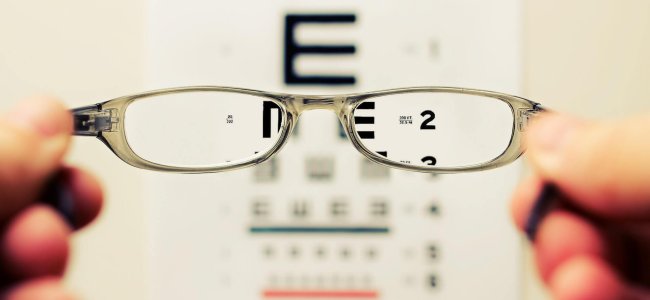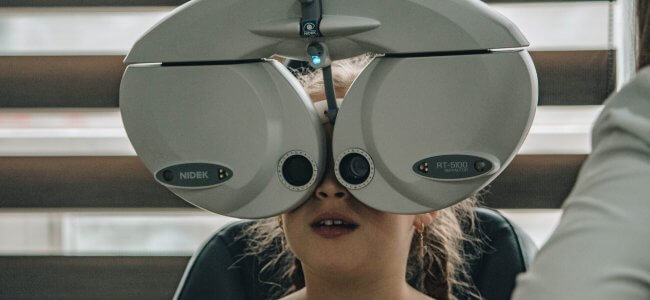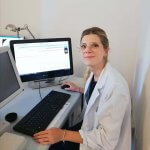Cognitive impairment: the rehabilitation path

The editorial staff of Emianopsia.com has the pleasure of hosting Dr Borghetti: graduated in Medicine and Surgery at the University of Pisa, specializing in Neurology. Dr Borghetti will offer us an overview of what are the principles of neurological rehabilitation: a path aimed at those with cognitive impairment.
Neurorehabilitation aims to recover patients from injuries to the nervous system and neurological disorders. Can you explain to us the dynamics and mechanisms through which a neuro-rehabilitative path can lead to an improvement of the cognitive disorder of the patient?
“Cognitive impairment can be the result of acute brain damage (traumatic, vascular) or a neurodegenerative process with variable evolution. Such a disorder can cause profound upheavals and limitations in the patients’ lives, as it affects the personal, affective, relational, and working spheres.
The main objective of any rehabilitation is therefore to promote functional recovery, to give back to the patient an adequate autonomy and quality of life. Cognitive rehabilitation is a therapeutic approach aimed at improving both cognitive functions, such as attention, memory, problem-solving, as well as those related to communication and affectivity.
It can be aimed either at recovering lost functions, if possible, or adopting compensatory strategies and alternative solutions to the functional limitations imposed by the injury (enhancement of residual functions).
Cognitive rehabilitation interventions can be performed in one or more of the phases that follow the brain injury, such as during hospitalization, during discharge from hospital, or even once back home. These can be carried out individually, with family members or, again, in groups, with the help of professionals in the sector (rehabilitators, occupational therapists, etc.). The multidisciplinary approach is the one that usually yields the best results.”
We analysed what cognitive impairment could come from. But which diseases are most frequently treated in the field of neurology?
“This is an interesting question, although it is not easy to give an exhaustive answer. Let’s say that the frequency of pathologies varies greatly depending on the age group. In children and young people demyelinating diseases, headaches, and sleep disorders are usually more frequent, while in the middle-advanced age there is a prevalence of neurodegenerative and cerebrovascular pathologies. These are diseases that often, unfortunately, assume chronic or disabling characteristics and therefore require a particular approach both in diagnosis, in follow up and in the long therapeutic path.
Furthermore, one of the characteristics of neurological pathologies is that very different causes or harmful events (for example, a trauma, or a neoplasm) can cause very similar or even indistinguishable clinical pictures. Luckily, today we have very effective technologies (such as neuroimaging) that allow us to get a faster and more accurate diagnosis. As for the rest, there is still much to be discovered about the aetiology and therapy of many diseases and neurological conditions. “
Could you explain the procedural process leading to a neurological diagnosis (for example, what are the most frequent tests to diagnose the type of cognitive deficit)?
“This also depends a lot on the type of pathology or on what is the most likely cause of a certain disorder. In recent decades, however, huge progresses have been made in the field of diagnostics, with achievements that have changed the nature and perception of many neurological diseases.
As with any medical discipline, it is first necessary to collect the history of the patient and their past and present problems. The clinic, as in all disciplines, is the one that guides the mind and the hand of the operator. Subsequently, the choice of investigations to be carried out ( that we call first level) will vary depending on the suspected site of injury, which in the case of neurological diseases could be located at the level of the brain, spinal cord, nerves, and muscles.
Regarding the central nervous system, among the most widely used methods, there are certainly those of neuroimaging (CT, MRI), which allow to have morpho-structural information quickly and with high levels of sensitivity. Other investigations, such as the electroencephalogram, evoked potentials, or scintigraphy, provide functional information, giving us information about possible deficiencies in the functioning of one or more circuits.
However, in the case of lesions on the peripheral nerves and muscles, the first level investigations will be essentially electrophysiological (as in the case of electromyography and the study of the rates of conduct) although in this field histology and molecular biology play a fundamental role in identifying rare diseases and in distinguishing the real nature of clinical pictures also very similar to each other.”
The recent health emergency has revealed the strategic impact that telemedicine can have on our health system: what is your opinion on the innovative approaches that telemedicine aims to make the health system standard and customary?
“Personally, I am a great supporter of telemedicine, both in terms of diagnosis and treatment. Although it is not applicable indiscriminately, the possibility of reducing the distance between doctor and patient – both in temporal and spatial terms – can have a positive effect on a great number of people.
There is no doubt that we must pay attention to a whole new range of aspects, such as those relating to privacy, the possibility of an inadequate clinical assessment, or the risks associated with a more or less “conscious” abuse of new technologies. Social media, instant messaging, telemedicine and, in general, all new technologies, contain a potential that we are not yet ready to fully manage.
Nonetheless, having the opportunity to make therapeutic adjustments, monitor the course of a therapy, identify early signs indicative of a worsening or even – and more simply – be of support, for those who need it, is fundamental to provide holistic care. Sometimes a few words of comfort are enough. Without considering all the advantages linked to the dematerialisation of medical records, which offers – in addition to better data management – the possibility of carrying out statistical and epidemiological processing or soon, training of artificial intelligence.
Finally, another interesting aspect is represented by the possibility of remotely monitoring the progress of computerized therapies, which for instance are applicable in some neurorehabilitation techniques. The patient can thus undergo targeted therapeutic protocols even at home – when and how they prefer – without needing to travel. Each session is followed at a distance by specialists who process, asynchronously, the data collected: these will be used to modify the subsequent sessions according to the results obtained in adherence to the therapeutic path.”
We thank Dr. Borghetti for providing us with this in-depth study on the role of neurorehabilitation in the event of cognitive deterioration and degenerative pathologies. Recovers the first part of the interview with Dr. Borghetti Bitemporal and homonymous hemianopsia.

You are free to reproduce this article but you must cite: emianopsia.com, title and link.
You may not use the material for commercial purposes or modify the article to create derivative works.
Read the full Creative Commons license terms at this page.






